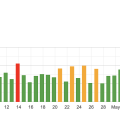You’re running a local business and you want to make sure your online presence puts you on the map—literally. That’s where local SEO comes into play. This guide breaks down the essential steps to optimize your website for local search engine optimization (SEO). From claiming your Google My Business profile to using localized keywords, you’ll get actionable tips to ensure that your business appears in local search results, drives traffic, and attracts more customers from your community. Ready to boost your visibility in local searches? Let’s dive in. Have you ever found yourself wondering, “How do I optimize my website for local SEO?” You’re not alone! Whether you’re running a cozy coffee shop or a bustling digital agency, local SEO is a game-changer for reaching customers right in your neighborhood. Let’s dive in together and explore some ways to make your website stand out to local searchers.
Why Local SEO Matters
Local SEO is all about optimizing your website to rank higher for local searches. When someone nearby searches for services or products you offer, you want to be at the top of their results, right? Effective local SEO can help you attract more local customers, increase foot traffic to your physical location, and ultimately grow your business.
What Sets Local SEO Apart?
The key difference between local SEO and traditional SEO is the focus on geography. While general SEO aims to increase your visibility on a global scale, local SEO targets potential customers in a specific area. This means you’ll be competing against fewer websites and can achieve quicker results.
Optimize Your Google My Business Profile
One of the most effective ways to boost your local SEO is by setting up and optimizing your Google My Business (GMB) profile. Your GMB profile acts as a mini-website for local searches, providing potential customers with important information at a glance.
Setting Up Your GMB Profile
First things first, you’ll need to claim your business on Google. Simply go to the Google My Business website, search for your business, and click “Claim this business.” If you don’t find your business, you can create a new listing.
Crucial Elements to Include in Your GMB Profile
Make sure to fill out every section of your GMB profile. Here’s a quick checklist to ensure you don’t miss any details:
| Element | Description |
|---|---|
| Business Name | Make sure it’s your official business name. |
| Address | Ensure it’s consistent with what’s listed on your website and other directories. |
| Phone Number | Use a local phone number to enhance local relevance. |
| Website URL | Link directly to your most relevant page. |
| Categories | Choose primary and additional categories that fit your business. |
| Hours of Operation | Be accurate and update them for holidays and special events. |
| Photos | Add high-quality images of your business, products, and services. |
Encouraging and Managing Customer Reviews
Positive reviews can significantly boost your local SEO. Encourage satisfied customers to leave reviews by providing excellent service and making it easy for them to review you, perhaps by sending a follow-up email with a link. Respond to all reviews, both positive and negative, to show that you value customer feedback.
On-Page Optimization Techniques
Local SEO isn’t just about off-site factors like GMB profiles. Your website itself can be a powerful tool in attracting local traffic.
Using Local Keywords
Incorporate local keywords into your website’s content, such as your city’s name or neighborhood. Tools like Google Keyword Planner can help you discover relevant local keywords.
Where to Use Local Keywords
Here are some strategic places to include these keywords:
- Title Tags
- Meta Descriptions
- Headers (H1, H2, etc.)
- Body content
- Image Alt Text
- URLs
Creating Location-Specific Pages
If your business has multiple locations, create a unique page for each one. This will help Google understand where you operate and improve your chances of ranking for local searches in each area.
Adding a Map to Your Website
Including a Google Map on your contact page makes it easier for potential customers to find you. Plus, it sends strong local signals to search engines.

Building Local Backlinks
Backlinks are links from other websites to your own, and they play a crucial role in SEO. For local SEO, getting backlinks from local websites can boost your credibility and visibility.
How to Get Local Backlinks
- Local Business Directories: Submit your site to local business directories like Yelp or the local Chamber of Commerce.
- Local News Outlets: Reach out and provide valuable content that might interest local journalists.
- Local Bloggers and Influencers: Collaborate with local influencers who can link back to your site.
Here’s how you can diversify your local backlinks:
| Source | Description |
|---|---|
| Business Directories | Listings in local directories like Yelp, Yellow Pages, or niche-specific directories. |
| Partnerships | Collaborate with local businesses for events or promotions that lead to mutual backlinks. |
| Sponsorships | Sponsor local events, charities, or sports teams, often yielding a backlink in return. |
| Guest Posts | Write guest blog posts for local websites, blogs, or online magazines. |
| Press Mentions | Get featured in local news stories or press releases. |
Leveraging Social Media for Local SEO
Social media might not directly affect your local search rankings, but it can still boost your local SEO efforts. Engaging with your community on social media can drive traffic to your site and enhance your local presence.
Using Geotags and Hashtags
Geotags can be a powerful tool, especially on platforms like Instagram and Facebook. Use location-specific hashtags to reach a local audience and encourage user engagement.
Engaging with Local Followers
Actively engage with your followers by responding to comments and messages, hosting local events, or sharing user-generated content. The more interaction, the more foot traffic!
Mobile Optimization
A significant portion of local searches come from mobile devices, so ensuring your website is mobile-friendly is crucial.
Mobile-Friendly Design
Ensure your website uses a responsive design that adjusts to different screen sizes. Google’s Mobile-Friendly Test can help you identify and fix issues.
Fast Load Times
A slow website can deter visitors and hurt your rankings. Optimize images, leverage browser caching, and minimize your code to improve page speed.
Tracking and Measuring Local SEO Success
You can’t improve what you don’t measure, right? Regularly tracking your local SEO efforts will help you refine your strategy for better results.
Tools for Tracking
Here are some tools that can help you track important metrics:
| Tool | Use |
|---|---|
| Google Analytics | Measure website traffic, user behavior, and conversion rates. |
| Google Search Console | Monitor your site’s search presence and fix any issues. |
| BrightLocal | Track local rankings, audit citations, and manage online reputation. |
| Moz Local | Check local listing scores and identify opportunities for improvement. |
Key Metrics to Monitor
Keep an eye on these key performance indicators (KPIs) to gauge your local SEO success:
- Local Search Rankings: Where your site appears in local search results.
- Website Traffic: Amount of visitors from organic search.
- Conversion Rates: Number of visitors turning into customers.
- Reviews and Ratings: Quantity and quality of customer reviews.
- Backlinks: Number and quality of local backlinks.
Common Local SEO Mistakes to Avoid
Even the savviest marketers can slip up. Here are some common mistakes to avoid:
Inconsistent NAP Information
Your Name, Address, and Phone number (NAP) should be consistent across all platforms. Inconsistent information can confuse search engines and users alike.
Neglecting Reviews
Ignoring reviews, especially negative ones, can harm your reputation. Always respond to reviews to show that you care about customer feedback.
Keyword Stuffing
Overloading your content with keywords can make it unreadable and may even get you penalized by search engines. Aim for natural, engaging content.
Ignoring Mobile Users
Failing to optimize your site for mobile can lose you a huge chunk of potential customers.
Conclusion
Optimizing your website for local SEO doesn’t have to be complicated. By following these tips and best practices, you can boost your visibility, attract more local customers, and grow your business. Remember, local SEO is an ongoing process—regularly update your strategies based on performance metrics and keep up with the latest trends to stay ahead of the competition. Now, time to roll up your sleeves and start optimizing!











